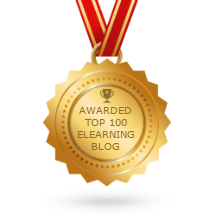Virtual Professors showcases the most interesting free online college courses and lectures from top university professors and industry experts.
Virtual Professors writes, "Hailed as “the new Nostradamus,” Bruce Bueno de Mesquita has been shaking the world of political science to its foundations with his predictions of world events. His systems based on game theory have an astonishing 90%+ ratio of accuracy and are frequently used to shape US foreign-policy decisions on issues such as the terrorist threat to America to the peace process in Northern Ireland.
Considered by many to be the most important foreign-policy analyst there is, it is no surprise that he is regularly consulted by the CIA and US Department of Defense."
In this lecture below Professor Bueno de Mesquita looks at what is needed to reliably anticipate and even alter events in any situation involving negotiation in the shadow of the threat of coercion. He will demonstrate how to bring science to decision making in any situation from personal to professional.
Predictioneer: How to predict the future with game-theory
About Bruce Bueno de Mesquita
Bruce is the Julius Silver Professor of Politics and Director of the Alexander Hamilton Center for Political Economy at New York University and a Senior Fellow at the Hoover Institution, Stanford University. He is also a partner in Mesquita & Roundell, LLC (212 632 3950; contact harry@mesquita-roundell.com), a New York-based consulting firm that uses game theory models he developed to assist corporations and the U.S. intelligence and policymaking community in complex negotiations involving mergers and acquisitions, litigation, regulation, and national security matters.
Bruce received his doctorate in political science from the University of Michigan in 1971 and a doctorate (Honoris Causa) from the University of Groningen in 1999. He is a member of the American Academy of Arts and Sciences, the Council on Foreign Relations, a former Guggenheim Fellow, the 2007 recipient of South Korea’s DMZ Peace Prize, and the recipient of many other academic honors for his teaching and his research.
Read more...
The Predictioneer's Game: Using the Logic of Brazen Self-Interest to See and Shape the Future
By Bruce Bueno de Mesquita
The Predictioneer’s Game uses game theory, which is a fancy label for a simple idea – people compete, and they always do what they think is in their own best interest – and its insights into human behavior to predict and even engineer political, financial, and personal events. The forecasts derived by Bruce Bueno de Mesquita have been employed by everyone from the CIA to major business firms, and have an amazing 90 percent accuracy rate. This dazzling and revelatory book shares his startling methods and lets you play along in a range of high-stakes negotiations and conflicts.
Revealing the origins of game theory and the advances made by John Nash, the Nobel Prize–winning scientist perhaps best known from A Beautiful Mind, Bueno de Mesquita details the controversial and cold-eyed system of calculation that he has since created, one that allows individuals to think strategically about what their opponents want, how much they want it, and how they might react to every move. From there, Bueno de Mesquita games such events as the North Korean disarmament talks and the Middle East peace process and recalls, among other cases, how he correctly predicted which corporate clients of the Arthur Andersen accounting firm were most likely engaged in fraudulent activity (hint: one of them started with an E). And looking as ever to the future, Bueno de Mesquita also demonstrates how game theory can provide successful strategies to combat both global warming (instead of relying on empty regulations, make nations compete in technology) and terror (figure out exactly how much U.S. aid will make Pakistan fight the Taliban).
Read more...
Related link
The Predictioneer’s Game
Source: Virtual Professors and The Predictioneer’s Game
 Curtin University's director of e-Learning Tony Herrington argues there is no basis to downgrade the worth of modern online learning and that it demands the same funding priority as face-to-face.
Curtin University's director of e-Learning Tony Herrington argues there is no basis to downgrade the worth of modern online learning and that it demands the same funding priority as face-to-face.
















